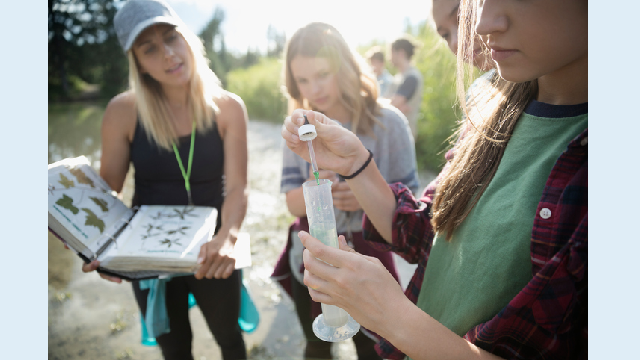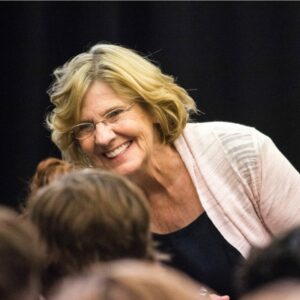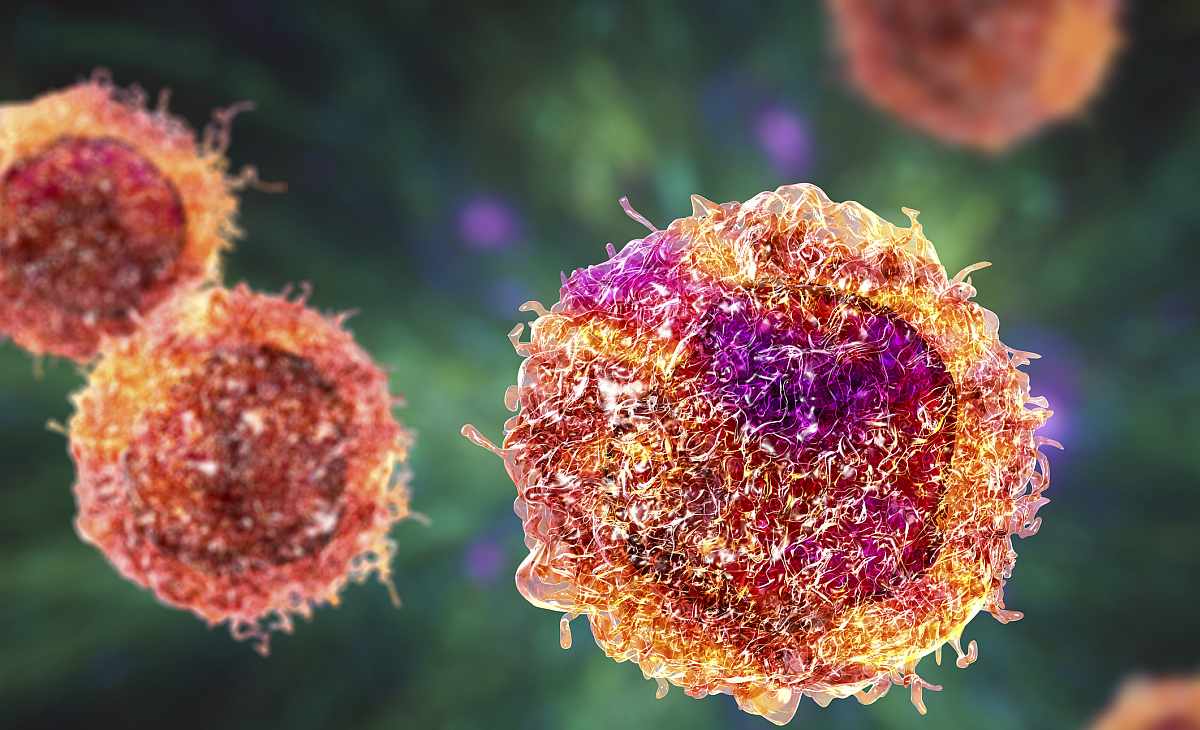Australia is on track to boost girls’ participation in STEM, but we need to move much faster. It’s a matter of both equity and pragmatism, says Professor Lyn Beazley.
As a distinguished neuroscientist, Australian Academy of science Fellow, 2015 West Australian of the Year, and former Chief Scientist for Western Australia (the first female to hold such a state role nationally), Lyn has made a major contribution to the promotion and direction of science in Australia, as well as championing science in the classroom programs and gender diversity in STEM.
Hear from Lyn in this fascinating and inspiring article, then have a go at challenging your students’ perceptions with our STEM Pack 1: Unconscious Bias.
Word Count: 1472

One day, more than a year ago, I was among a dozen or so STEM supporters, mostly but not exclusively women, on a Techtrails incursion. We were headed to a state secondary school on the south coast of Western Australia.
The aim was to inform and inspire students, influencing them to stick with STEM subjects – especially the girls who traditionally tend to drop them.
We started with a brief and hopefully energy-inspiring welcome from me to the students. In this co-educational school both girls and boys were involved, because research shows that the message hits home better to both genders.
Groups of around 10 students sequenced through workstations predominately led by women, who were living examples of “if I can do it, so can you”.

These stations vary from visit to visit, but have included students interacting with robots, becoming a forensic scientist at a mock crime scene, and testing Nobel Laureate Barry Marshall’s latest invention – his diagnostic Noisy Guts device.
Students have said they were “blown away” by the opportunity to hear first-hand from an RAAF pilot and a Royal Australian Navy meteorologist who, for good measure, was in full uniform and eight months pregnant at the time. What a great message!
On this particular visit, a Year 11 student had just worked with a robotics expert and their Nao robot, and seemed particularly happy.
When I asked why, she replied:
“I have always known what I want to do but I didn’t know if the subject existed. And if so I didn’t know its name or where I could study it. Now I know it is real, it’s bio-mechatronics and I can study it at universities right here in Western Australia”.
One life changed.
The visit was organised by Women in Technology WA, the largest networking organisation in the State and described as “women focussed, men friendly”.
A group of dedicated women run the industry-sponsored program, recently propelled forward by a one-off Federal Government Grant.
STEM in school leads to informed grown-ups
There are many such examples across the country of programs, some female-focussed, that help build a STEM-savvy generation of Australians. I will not attempt to cover them all but I thank all industry and community groups involved.
The Academy’s STELR program and Primary Connections of the Academy of Science are splendid examples. But I do not know of an Australia-wide register of such programs to share knowledge, avoid gaps and strive for complementarity.
Australia needs to stress STEM to girls and boys as a matter of both equity and pragmatism. It isn’t right to leave people out and we can’t afford not to make the most of our entire talent pool, irrespective of gender.
We must prepare every young Australian for the jobs of the future – 40 per cent of existing jobs are due to disappear and 75 per cent of new jobs are predicted to require STEM skills.
Beyond the career aspect lie wider issues of an informed community. We must equip the emerging generation to make informed decisions on ethical and practical questions, including “Do I vaccinate my children?”, “Do I support genetic modification of crops, the environment or even people?”, and “Where do I stand on climate change?”.
When young people are making subject choices in their final years of schooling, surely STEM subjects should be among them.
Indeed, I have yet to see an argument why mathematics should not be compulsory throughout schooling, like English. This is already the case for many of the countries that our workforce and economy will compete against in the future. But even when students choose maths, the girls more often favour the easier options.
My view is that STEM is vital for whichever direction secondary students plan to follow. It is easy to argue for students with aspirations for a university education, but it applies equally to those selecting a vocational route.
STEM underpins many vocational courses including those traditionally popular with girls (veterinary, nursing, beautician and so forth) but also the traditionally male-dominated ones (electrical trades, carpentry or plumbing). These, thank goodness, are increasingly attracting young women.
I welcomed Western Australia’s Trade Up mentor program and the State Government-backed scholarship scheme. I apologise if this and other examples I give here reflect my local experience but I am convinced they are applicable far more widely.
It’s never too early to smash stereotypes
Ideally we need to engage students earlier than secondary school.
Research shows clearly that we can never start too early to overturn stereotypes about gender and STEM. Unless we engage kids before they leave primary school, we are unlikely to do so later.
Parents, caregivers and educators can all play a part. Parents and caregivers, for instance, can arrange visits to museums with science sections and to centres such as Questacon. They could put a chemistry set or a microscope in the Christmas stocking, and above all, they can prioritise discovering new things together. I know the Scout and Guide movement are highlighting STEM, which is great.
Teachers also play a pivotal role. I would argue that building a teacher’s confidence to teach science well across primary and secondary sectors is the single most important thing, augmented by a science facility in every school.
I have also witnessed the value of providing equipment and a great example is the Microscopes in Schools Rotary Clubs-driven program. It has already provided microscopes to every Grade 5 and 6 student in more than half of all WA primary schools, including one with just eight students deep in the Tanami Desert. I hear that even the kindergarten kids borrow the microscopes, reinforcing the “start early” message.
At a Federal level I cheer for the recent appointment of a Women in STEM Ambassador. And what a great choice in astrophysicist Professor Lisa Harvey-Smith. It is a huge job and I am sure we can help Lisa in so many ways. I suggest two here.

1. Connecting Fellows with classrooms
One of these would build on an existing Academy program. The recently introduced initiative for Fellows to connect by Skype with a primary school class was an eye-opener for me.
I hope I was a role model for the class in Brisbane, in fact one young lady asked a question that sadly I still hear far too often: Can women become scientists?
It is an easy program to rollout and costs only one’s time. I would love to see this grow into an Australia-wide program with Fellows and others, especially women in STEM, reaching out to schools particularly those in rural, regional and remote areas.
2. A School Science Patron scheme
I have recently become Patron of a local secondary school. It has been a great success with students now invited to professional workshops and conferences.
I also organised a QandA at the school with Professor Gretchen Benedix, a cosmic geologist from Curtin University, showing in real life that science is for girls. I hope that many reading this article, especially women, will be inspired to contact a local school and establish such a relationship.
How to ensure girls study STEM
• STEM integrated into teaching from kindergarten to Year 12 with suitably trained and appreciated teachers, women and men
• Mathematics being studied by every student throughout their school education
• All students gaining hands-on science experience, with school laboratory technicians being given appropriate support and recognition
• A nation-wide register being compiled of STEM-outreach programs
• Every school having a Science Patron, with many being women
• A Skype-style program bringing STEM experts into classrooms, especially to those in rural, regional and remote areas.
STEM in practice makes memories
Ultimately, it takes hands-on, meaningful and exciting science to keep students engaged in STEM.
I remember with pleasure far more of my school practical classes than the theory lessons. Watching a flame change colour to help identify an unknown substance, monitoring plant growth in response to directional light, or witnessing tadpoles as they metamorphosed into frogs.
And now, teaching STEM reaches beyond the school classroom and into the laboratory, the terrestrial and marine environment, and local science-based industries. It embraces long-term school-based activities such as aquaculture and horticulture, astronomy, and building, such as the solar car that raced across the Nullarbor.
Students have even planted vineyards and made wine. One team even came third in the Perth Royal Show wine competition, even though the students were too young to savour their produce.
We also need well-trained school laboratory technicians (themselves mostly women). A recent initiative – that I hope will be established long-term – is the highly successful ASSIST web-based information program designed for technicians but valuable also for teachers.
So in 10 years time, where will Australia be placed in terms of girls’ participation in STEM?
Gender issues might have become a distant memory, but with current rates of progress, there is still a way to go.
Login or Sign up for FREE to download a copy of the full teacher resource





